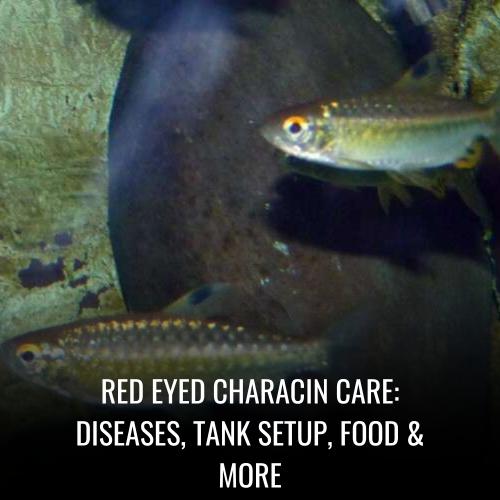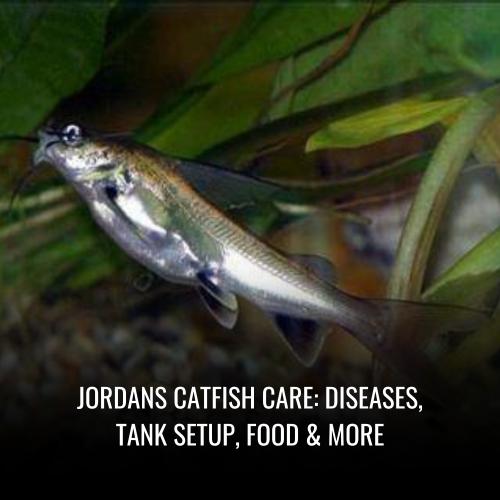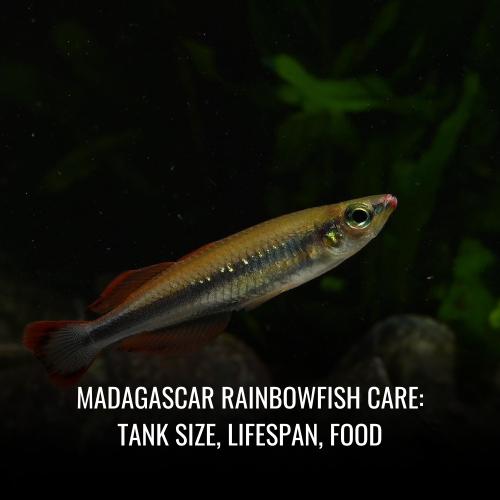Panda Cory Care: Lifespan, Food, Tank Setup & More
This post contains affiliate links. As an Amazon Associate, we earn from qualifying purchases.
Panda Corys, scientifically known as Corydoras panda, originate from the oxygenated waters of South America, particularly the upper Amazon tributaries in Peru. These captivating species of catfish are a delight to many in the aquarium hobby due to their striking resemblance to the giant panda, which is reflected in their common name. The Panda Corydoras, whose peaceful disposition makes them excellent companions for many other peaceful fish, including dwarf cichlids, thrive in groups and exhibit playful behavior that brings a dynamic aspect to community tanks.
Panda Corys are known for their robust appetite and readily accept various food options such as wafer foods, frozen foods including brine shrimp, and are particularly fond of foraging in a soft sand substrate. Females often appear more robust compared to males, especially when viewed from above.
Below is a simplified profile table for the Panda Cory:
| Attribute | Description |
|---|---|
| Scientific Name | Corydoras panda |
| Common Name | Panda Cory |
| Family | Callichthyidae |
| Usual Size in Tanks | Up to 2 inches (5 cm) |
| Recommended pH Range | 6.0 – 7.0 |
| Recommended Hardness (dGH) | 2 – 12 |
| Recommended Temperature | 72 – 79°F (22 – 26°C) |
| Reproduction | Egg-layer |
| Origin | Upper Amazon, Peru |
| Temperament (Own Species) | Peaceful and social |
| Temperament (Other Fish) | Peaceful |
| Tank Placement | Bottom dwellers |
| Lifespan | 4-5 years |
| Tank Size Requirement | 10 gallons minimum |
| Filtration System | Required for clean, oxygenated water |
| Sexual Dimorphism | Females fuller-bodied |
| Substrate Cleaning | Burrows and sifts through substrate |
The distinctive black markings on Panda Corys’ body including their face, dorsal fin, and tail, along with their compatibility and endearing nature, make them a favorite among aficionados seeking to replicate a slice of Central America in their home aquariums.
Scientific Name
The dwarf orange crayfish, scientifically designated as Cambarellus patzcuarensis, also referred to specifically in the pet trade as Cambarellus patzcuarensis sp. Orange, is a captivating freshwater species originating from Mexico. The scientific naming convention reflects its taxonomic placement and unique characteristics, making it distinguishable from other creatures.
Likewise, the Panda Cory, known by its scientific term Corydoras panda, belongs to the Callichthyidae family, indicating its nature as a type of armored catfish. This species is native to the Ucayali river system in Peru, adding a tropical touch to aquariums worldwide.
Both the Cambarellus patzcuarensis and Corydoras panda are egg-laying species, underlining their reproductive method in scientific terminology. To thrive, these aquatic creatures demand specific living conditions, such as nuanced pH levels, temperature ranges, and water hardness. Ensuring these parameters are met is essential for maintaining their health and well-being in captivity.
| Species | Scientific Name | Native Habitat | Breeding | Family |
|---|---|---|---|---|
| Dwarf Orange Crayfish | Cambarellus patzcuarensis | Mexico | Egg-layer | Cambaridae |
| Panda Cory | Corydoras panda | Ucayali River, Peru | Egg-layer | Callichthyidae |
Short, informative paragraphs coupled with organized tables can effectively communicate the pivotal information regarding the scientific names and classification of these intriguing species.
Average Size
The Panda Cory, affectionately known as the Panda Corydoras, is a diminutive species of catfish that reaches an adult size of about 2 inches (5 cm). Shortly after purchase, these tiny creatures typically measure between 1/2 and 1 inch (1.2 – 2.5 cm), but with proper care, they will grow to a standard size of 2 to 2.5 inches. Interestingly, the female Panda Corys exhibit a bit more growth compared to their male counterparts, achieving a mature length of approximately 55 millimeters (2.1 inches). Juvenile Corydoras panda are usually around eight weeks old when they first find homes in aquariums, and with time, they grow to reach full maturity at that same 55 millimeters.
Below is a quick-reference table displaying the growth stages of Panda Corys:
| Growth Stage | Size (in inches) | Size (in millimeters) |
|---|---|---|
| Purchase (Juvenile) | 0.5 – 1 | 12.5 – 25 |
| Adult (Female) | Up to 2.1 | 55 |
| Adult (General) | 2 – 2.5 | 50 – 62.5 |
Providing a well-maintained environment is key to enabling these peaceful fish to reach their full size potential. Regular maintenance and attention to water quality play a significant role in their growth and overall health.
Lifespan
The charming and peaceful Panda Corydoras, often a favorite in the aquarium hobby, can enjoy a considerable lifespan with the right care. These fascinating fish are known to live for 10 to 15 years under optimal conditions, mirroring the longevity of other Corydoras species. In certain cases, well-cared-for Panda Corys can even surpass the 15-year mark, a testament to their resilience and the effectiveness of meticulous care.
To ensure a lengthy and healthy life for Panda Corys, several crucial factors must be managed. The quality of water in which they dwell is paramount; it must be maintained meticulously to suit their needs. Diet also plays a significant role, with a varied menu contributing to their well-being. Additionally, routine care practices by the aquarist can mean the difference between a standard lifespan and one that exceeds expectations.
Here’s a simple reference on the lifespan of Panda Corys:
| Lifespan Aspect | Influence on Panda Corys |
|---|---|
| Standard Lifespan | 10-15 years |
| Potential for Extension | Over 15 years with exceptional care |
| Influencing Factors | Water quality, diet, and regular maintenance |
Proper attention to these aspects can enable some individual Panda Corys to pleasantly surprise their owners by thriving beyond the typical lifespan range.
Natural Habitat
Panda Corydoras hail from the lush river systems of South America, specifically within the boundaries of Peru and Ecuador. These adorable species of catfish thrive in environments where the waters are richly oxygenated, with a moderate to strong current, reflecting their need for well-maintained water conditions in the aquarium hobby as well.
Their preferred shallow watery homes usually have a mix of sandy or rocky substrates, along with an abundance of aquatic vegetation. Such surroundings offer the dual benefits of natural food sources and necessary protection. Panda Corys are inherently social; in their natural setting, they can be observed engaging in schooling behavior, a trait that should be considered when housing them in captivity to replicate their comfort in numbers.
The rivers inhabited by Panda Corydoras also feature floating plants, providing shaded areas that these fish utilize for shelter. To feel secure, they often seek out hidden spots to rest and retreat.
Quick Facts about Panda Corys’ Natural Habitat:
- Origin: Rivers of Peru and Ecuador
- Substrate: Sandy or rocky
- Vegetation: Abundant aquatic types
- Current: Moderate to strong, well-oxygenated
- Behavior: Social, prefers schooling
- Shelter: Floating plants and hiding areas
Appearance
The Panda Cory has a distinctive appearance that sets it apart from many other species of catfish in the aquarium hobby. With a body that is hyaline or translucent, their fins add a splash of color to their form. What’s truly eye-catching, however, are the prominent black markings that adorn them. The dorsal fin area is largely covered by a conspicuous black blotch, making it stand out.
Adding to their patterned look is a black band that wraps around the caudal peduncle, extending from the top to the bottom surface, and occasionally, you’ll find hints of black within the adipose fin. The Panda Cory’s head maintains the same base color as the body, highlighted by a dramatic black mask encircling the eyes and a vertical line descending from the fontanel above each eye which can give them an endearing appearance.
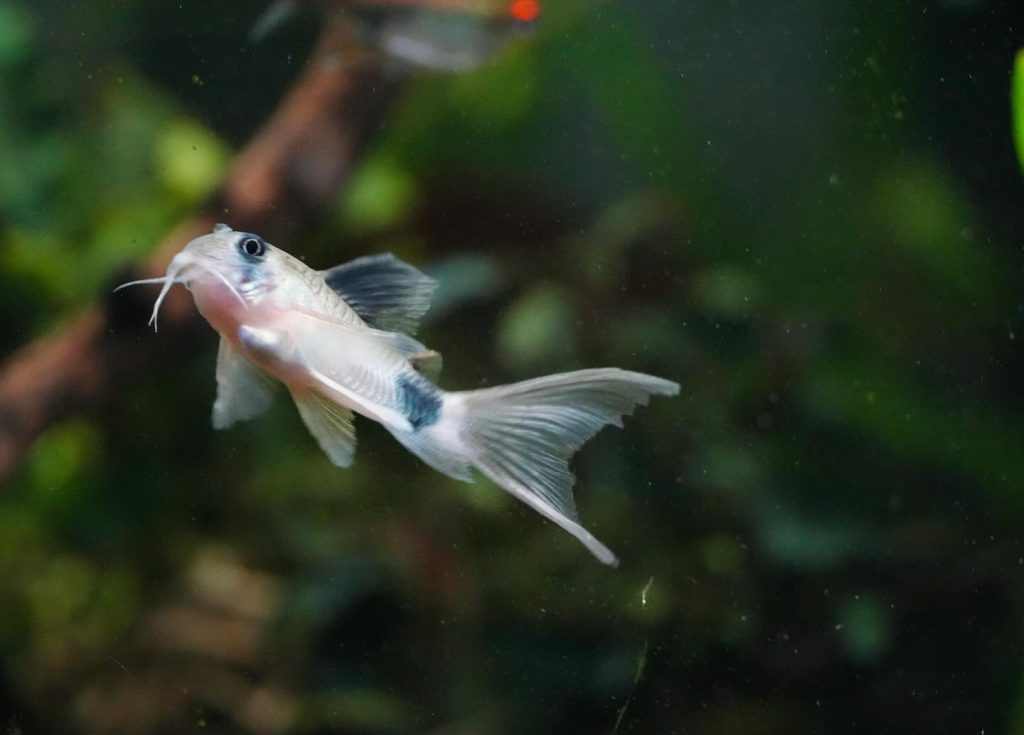
To complement their charm, the pectoral fins, resting just behind the operculum, are typically spread outward horizontally when the fish remains still, almost resembling an airplane’s wings. Below these, the pelvic fins are situated on the underside, trailing the pectoral fins. This unique patterning often draws comparisons to the giant panda, hence their common name.
Key Features of Panda Cory Appearance:
- Body: Translucent with colored fin rays
- Dorsal Fin: Large black blotch
- Caudal Peduncle: Encircled with a black band
- Head: Black mask with vertical stripes above the eyes
- Fins: Pectoral fins oriented horizontally, resembling wings
Behavior & Temperament
The Panda Cory, known scientifically as Corydoras Panda, showcases a docile and sociable demeanor that endears them to aquarists. Renowned for their peaceful nature, they are the epitome of community fish, harmoniously sharing space with other non-aggressive species.
When it comes to temperament, Panda Corys embody tranquility, navigating the aquarium floor with gentle curiosity and a friendly disposition. Instead of displaying territorial aggression or fin-nipping tendencies, they actively contribute to a serene aquatic environment, making them sought-after companions for a spectrum of similarly peace-loving fishes.
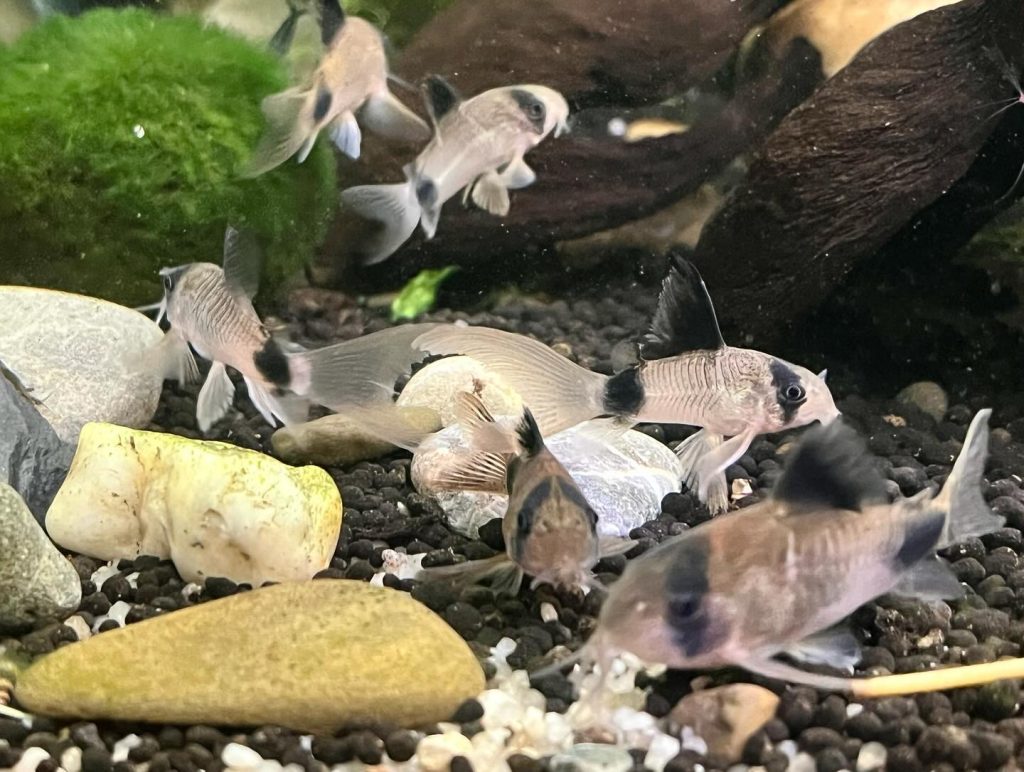
Are Panda cory Fin Nippers?
Panda Corys are not fin nippers. This behavior is rarely, if ever, observed in these gentle catfish. Their peaceful nature makes them ideal tankmates for a multitude of fish species, ensuring that the fins of other aquarium residents remain intact and free from harm.
Are Panda cory Aggressive To Each Other & Other Fish?
Panda Corys maintain a non-aggressive stance towards both conspecifics and other aquarium inhabitants. They avoid conflict, preferring instead to engage in social interactions and mutual exploration of their environment. Cohabitation with other peaceable fish species, including dwarf cichlids and small characins, is typically harmonious and without incident.
Are Panda cory Friendly To Each Other & Other Fish?
These affable catfish exhibit a genial and social attitude, thriving in the camaraderie of their own species and others. Panda Corys often display schooling behaviors, indicating their preference for living alongside fellow Panda Corys and are known to interact amicably with tank mates of a similar placid nature.
Are Panda cory Schooling Fish?
Panda Corys are indeed schooling fish, which means they thrive best when kept in groups. In the wild, these fish naturally form schools as a social and defensive measure, and this instinctual behavior is also evident in aquarium settings. A solitary Panda Cory may exhibit signs of stress, so it’s always recommended to keep them in groups.
Can You Have Just One Panda cory In The Tank?
While you can technically keep just one Panda Cory in a tank, it is not advisable. As schooling fish, Panda Corys rely on the presence of their own kind for security and social interaction. A solitary Panda Cory may become stressed, timid, or less active, reducing its overall health and quality of life.
Do Panda cory Need To Be In Groups?
Absolutely, Panda Corys need to be in groups to exhibit their natural behavior and ensure their well-being. A group of at least five to six individuals is ideal, as it closely mimics their social structure in the wild. Group living not only provides them with a sense of security and companionship but also fosters a more active and entertaining display for aquarists to observe.
Food & Diet
Panda Corys, as versatile omnivores and scavengers, possess a dietary inclination that spans both animal and plant-based nutrients. In the wild, they forage through riverbeds, indulging in a banquet that includes small crustaceans, worms, and plant debris. This varied diet is paramount for their health and vibrancy, which is why it should be replicated in the home aquarium. Offering a mixture of high-quality flake foods, sinking pellets, and wafers ensures that these bottom-dwelling fish receive their nutritional requirements.
Furthermore, incorporating frozen foods such as bloodworms, brine shrimp, and daphnia can provide the protein-rich part of their diet, essential for maintaining their energy and coloration. It’s beneficial to feed Panda Corys after the aquarium lights have been turned off, mimicking their nocturnal feeding habits and ensuring that they can dine in peace.
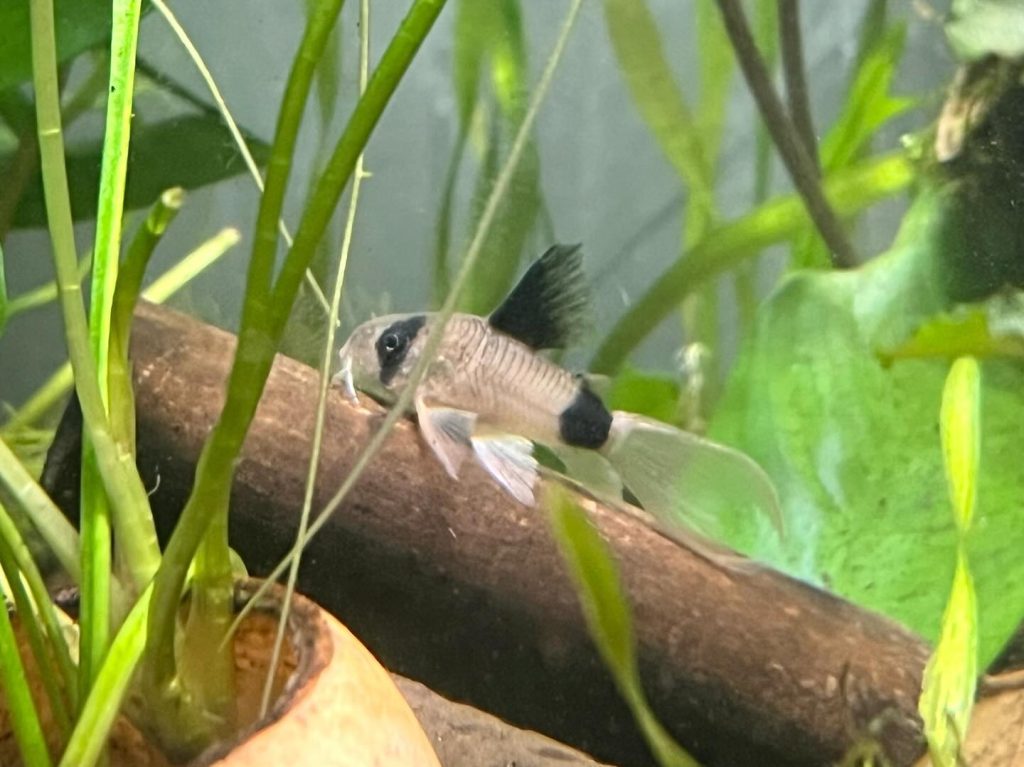
Do Panda cory Eat Algae?
Algae constitute a minor part of the Panda Cory’s diet. While they may not naturally feed on algae in the wild, where other food sources are abundant around root systems and rocks, in captivity, they will accept algae wafers. This addition can aid in controlling algal growth and supplements their varied diet, providing key nutrients. It’s important to note that while Panda Corys consume algae wafers, they should not be relied upon as the sole food source, given the fish’s omnivorous nature.
Do Panda cory Eat Shrimp?
Panda Corys are gentle and non-predatory towards adult shrimp, making them commendable tank mates in a community aquarium. Their diet is diverse and does not typically include live shrimp, especially if the Corys are well fed with their own suitable food sources. To foster a harmonious environment, ensure the Panda Cory’s dietary needs are fully met, which can prevent any opportunistic feeding on smaller or juvenile shrimp.
Do Panda cory Eat Bloodworms?
Bloodworms are a delectable treat for Panda Corys, resembling the type of insect larvae they would naturally consume. Providing bloodworms, either frozen or live, is an excellent way to enhance their dietary regimen, contributing greatly to their well-being. Nevertheless, bloodworms should be given as part of a rotating menu that includes various other foods, to maintain a balanced diet and keep the fish in optimal condition.
Do Panda cory Eat Mosquito Larvae?
Panda Corys will eagerly accept mosquito larvae, which parallels their carnivorous tendencies in the wild. These larvae provide similar nourishment to other live or frozen foods in the Corys’ diet. The introduction of mosquito larvae can encourage natural foraging behavior and should be incorporated with other meaty and plant-based foods for dietary balance and health.
Do Panda cory Eat Planaria?
While Panda Corys primarily eat prepared foods and small invertebrates, they are capable of consuming planaria—tiny flatworms that sometimes appear in aquaria—during their substrate-sifting activities. However, planaria should not be a primary food source, as Panda Corys require a nutritionally rich and varied diet to thrive. Regular and high-quality feedings will often minimize their need to resort to planaria as a food source.
Do Panda cory Eat Plants?
Living plants are safe from the mouths of Panda Corys, as these catfish typically do not consume them. They coexist wonderfully in planted tanks, where their presence can contribute to a healthy aquarium ecosystem. The plants offer shelter and supplementary oxygen, while the Panda Corys focus on their mixed diet of protein and vegetable-based food items.
Each of these aspects of the Panda Cory’s diet underscores the importance of diversity in their feeding routine. An assortment of high-quality flake, pellet, wafer foods, and a variety of frozen foods not only caters to their nutritional demands but also stimulates their natural foraging instincts. Regularly scheduled feedings, with an emphasis on moderation, prevent overfeeding and contribute to maintaining a healthy and clean aquatic environment.
Sexing: Male vs Female
Identifying the sex of Panda Corydoras is relatively straightforward. Males typically exhibit a slimmer, more streamlined physique, while females tend to be larger with a noticeably rounded shape, especially when viewed from above. During the breeding process, the differences become more pronounced. Females carry and develop eggs within their tract, becoming fuller-bodied when the eggs are ripe—indicative of their readiness to breed.
Males, on the other hand, play a unique role during courtship, utilizing their barbels to stimulate the females. It is during the spawning ritual that males fertilize the eggs held between the female’s pelvic fins. These sticky, yellowish eggs are then strategically deposited by the female onto aquarium plants, decorations, or glass, totaling up to 100 eggs within several hours. After laying, the eggs typically take about 4 to 5 days to hatch. The emerging fry are minute, necessitating the provision of finely powdered food to accommodate their small size.
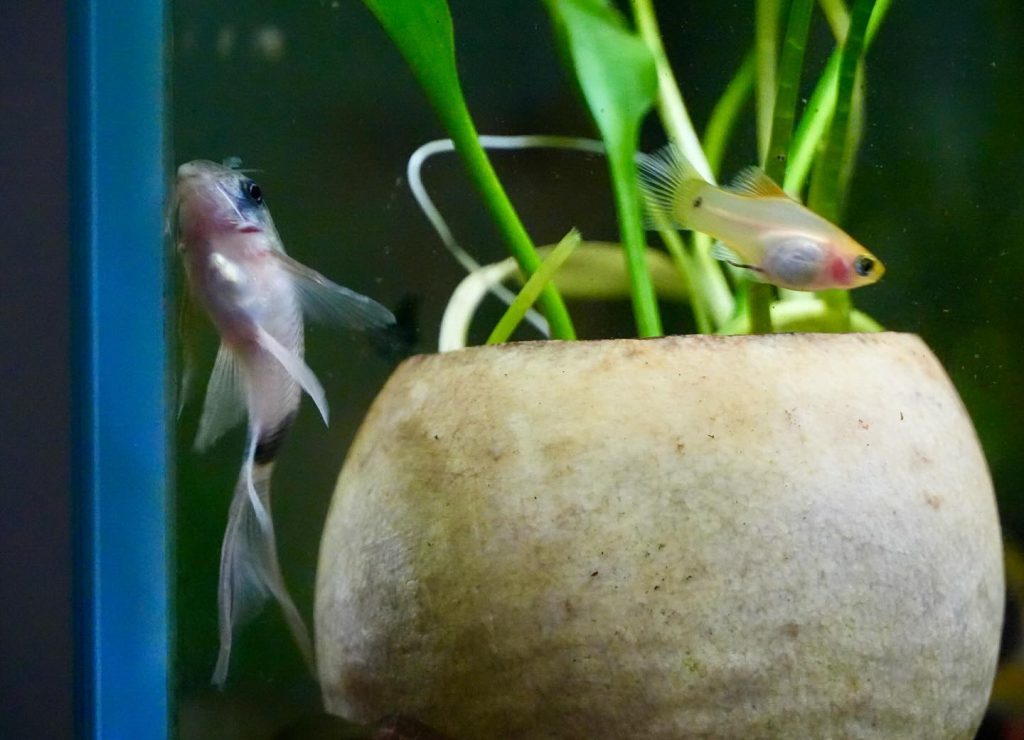
Panda cory Tank Mates
The Panda Corydoras, a peaceful and sociable species, thrives in a community aquarium setting, making them ideal companions for other non-aggressive fish. Preferred tank mates include smaller Tetras and Apistogrammas, as well as other gentle Cory species, which share their tranquil disposition. These miniature catfish appreciate the company and do best when kept in groups of six or more to foster their social nature.
Introducing Panda Cories to a tank with shrimp and other invertebrates can also lead to a harmonious living environment, as they share a comparable mild temperament. However, it is crucial to avoid pairing them with large, aggressive fish, as the Panda Cories’ docile nature may lead to stress and potential harm in the presence of bullies.
For an optimal setup, consider tank mates from their native South American waters, especially from regions like Peru, where similar water temperature preferences can ensure a cohesive and thriving community. By selecting the right companions, you help create a balanced ecosystem that caters to the Panda Cory’s need for peaceful interactions and a stress-free habitat.
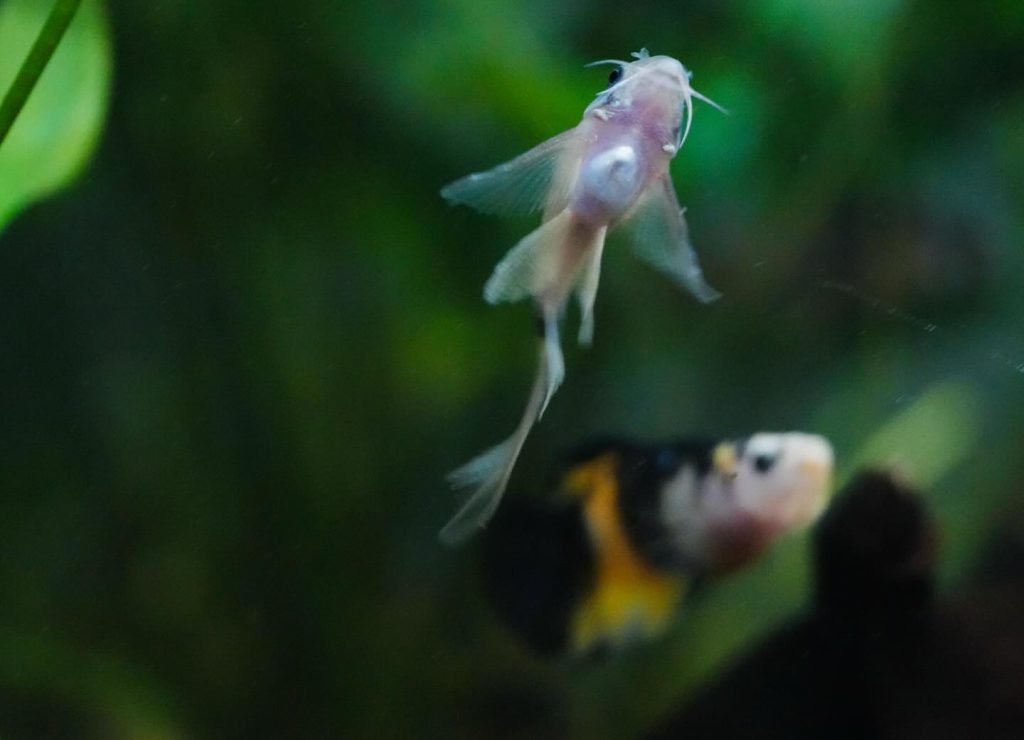
Aquarium Setup
Creating the perfect habitat for Panda Corydoras, known affectionately as Panda Corys, requires attention to several critical aspects of their environment, ensuring their health, happiness, and natural behavior. Let’s break down what you’ll need to provide for your Panda Cory aquarium setup.
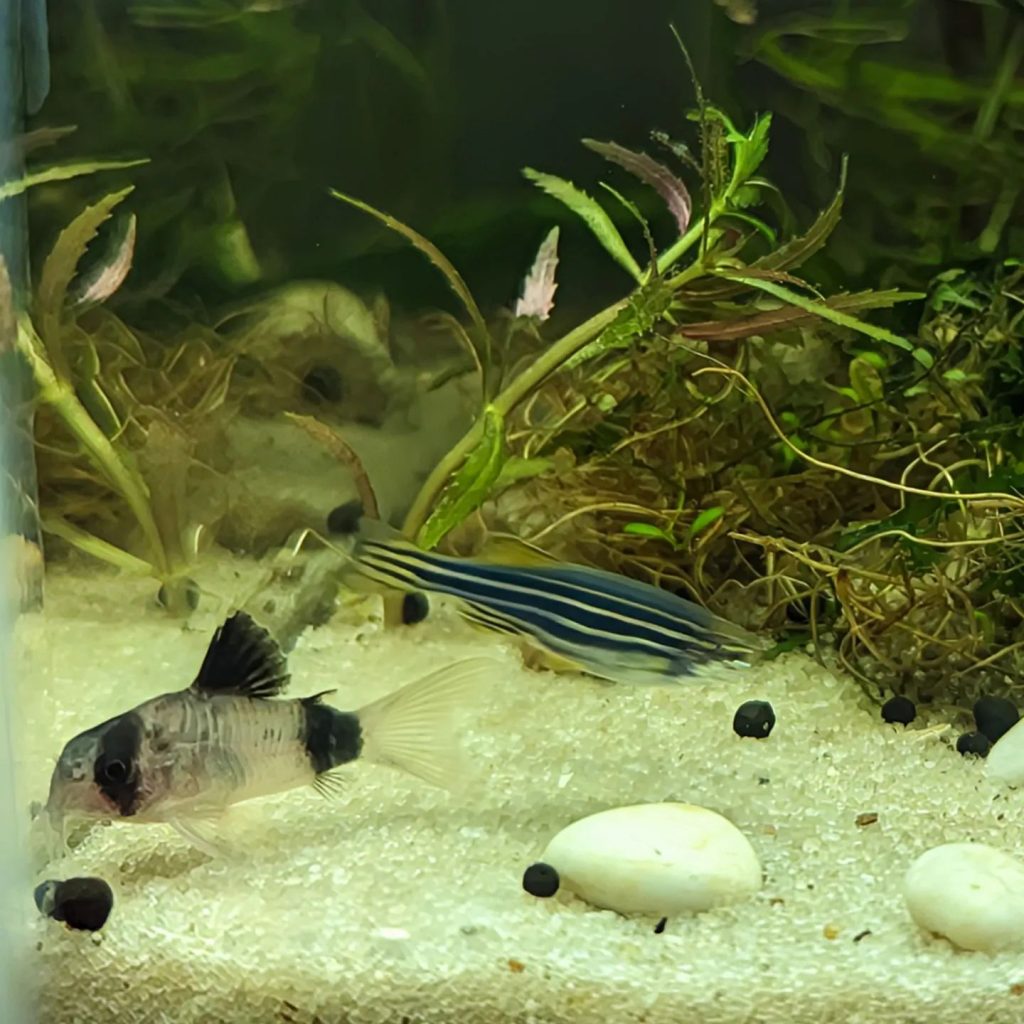
Ideal Tank Size
The Panda Cory is relatively small, but they are active and social fish that thrive in groups. A 10-gallon aquarium presents the minimum requirement for housing a small group, but as with many schooling fish, more space equals more comfort. For a school of 6 or more Panda Corys, a 20-gallon tank is recommended. This gives them ample room to exhibit their playful schooling behavior and keeps them healthier and less stressed. Notably, if you’re inclined to the longfin variety of Panda Corys, the 20-gallon size is also the minimum due to their need for space to accommodate their flowing fins.
Ideal Water Parameters
Water parameters are crucial for maintaining the health and well-being of your Panda Corys. The optimal water temperature range for these delightful catfish is between 68 to 77°F (20-25°C), which mimics their natural cooler water habitats in South America. They favour slightly acidic to neutral water, with pH levels of 6.0 to 7.0 being ideal. Maintain water hardness from 2 to 12 dGH. Consistency is key, so equip your setup with reliable heaters and thermometers to keep conditions stable.
Filtration
Panda Corys inhabit oxygenated waters in the wild, so your aquarium should have a good filtration system that provides moderate water movement and a high level of oxygenation. Overfiltration is recommended due to their sensitivity to water quality. However, the flow should not be too strong as to create stressful conditions for these peaceful fish. Furthermore, a soft sand substrate is essential, as it prevents damage to their delicate barbels and minimizes the risk of infection that might occur with coarser substrates.
Lighting
These fish are not demanding when it comes to lighting and can adapt well to different levels within a home aquarium. The key is to offer a balance that supports the overall health of the tank, enhancing plant life while allowing the Panda Corys to sparkle in their natural hues. An off-white to pinkish-orange body coloration can become slightly iridescent under the right conditions, making proper lighting an aesthetic plus. Nevertheless, ensure that the tank also features plenty of shaded retreats, as Panda Cories appreciate breaks from direct light, giving you a range of lighting options to fulfill both decorative and practical purposes in the aquarium.
Common Possible Diseases & Prevention
Panda Corys, like many aquarium fish, are susceptible to common diseases, such as ich or white spot disease, fin rot, and fungal infections. To prevent these ailments, regular maintenance, including partial water changes and tank cleaning, is crucial to maintaining high water quality. It’s essential to quarantine new fish before introducing them to your main tank to prevent the spread of disease.
Feeding a balanced diet of high-quality flakes, pellets, frozen foods, and occasional live treats like brine shrimp can bolster their immune system. Additionally, avoiding overfeeding and promptly removing uneaten food helps prevent water contamination that can lead to disease. Keeping Panda Corys in appropriate water conditions, as outlined above, also plays a pivotal role in disease prevention.
| Disease | Prevention Measures |
|---|---|
| Ich (White Spot) | Maintain stable water temperature |
| Quarantine new fish | |
| Regular water changes | |
| Fin Rot | Avoid overstocking |
| Remove aggressive fish | |
| Clean and maintain equipment | |
| Fungal Infections | Ensure clean, well-oxygenated water |
| Treat with anti-fungal medication as per instructions |
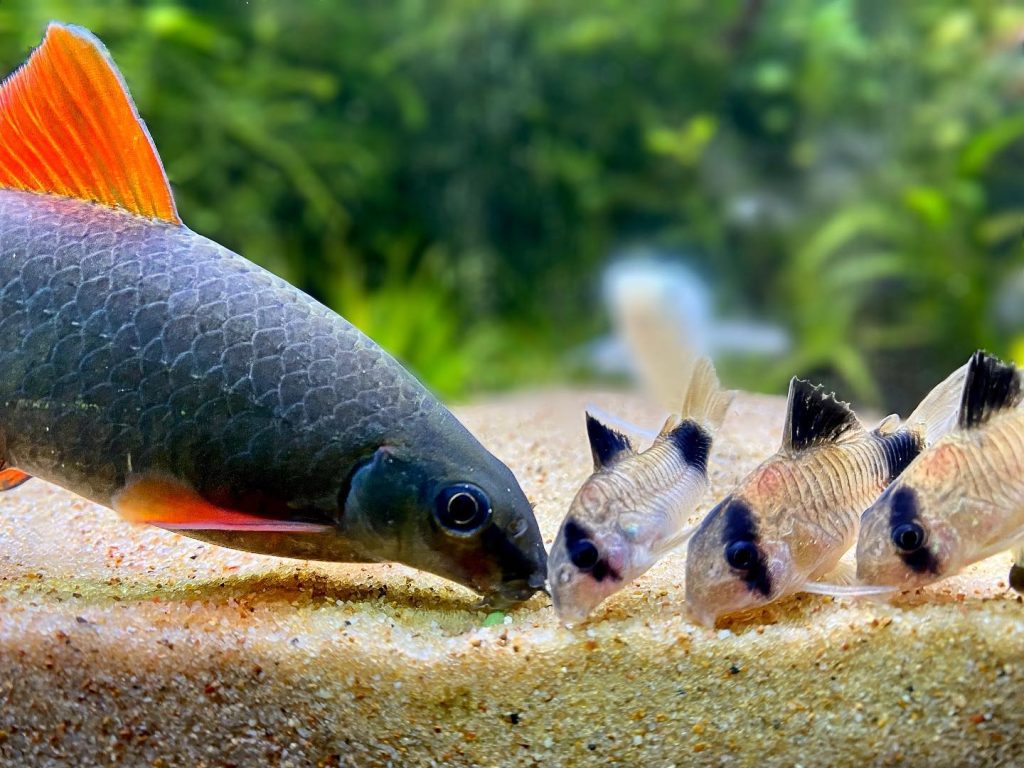
Breeding Panda cory In Aquarium
Breeding Panda Corydoras in a home aquarium can be a rewarding experience for the enthusiast. These peaceful fish flourish when kept in schools of six or more, which encourages natural behavior and increases the likelihood of successful spawning. When breeding Panda Corys, it’s vital to cater to their dietary needs with high-quality flake, pellet, and wafer foods, complemented with meaty treats like frozen bloodworms to ensure their optimal health.
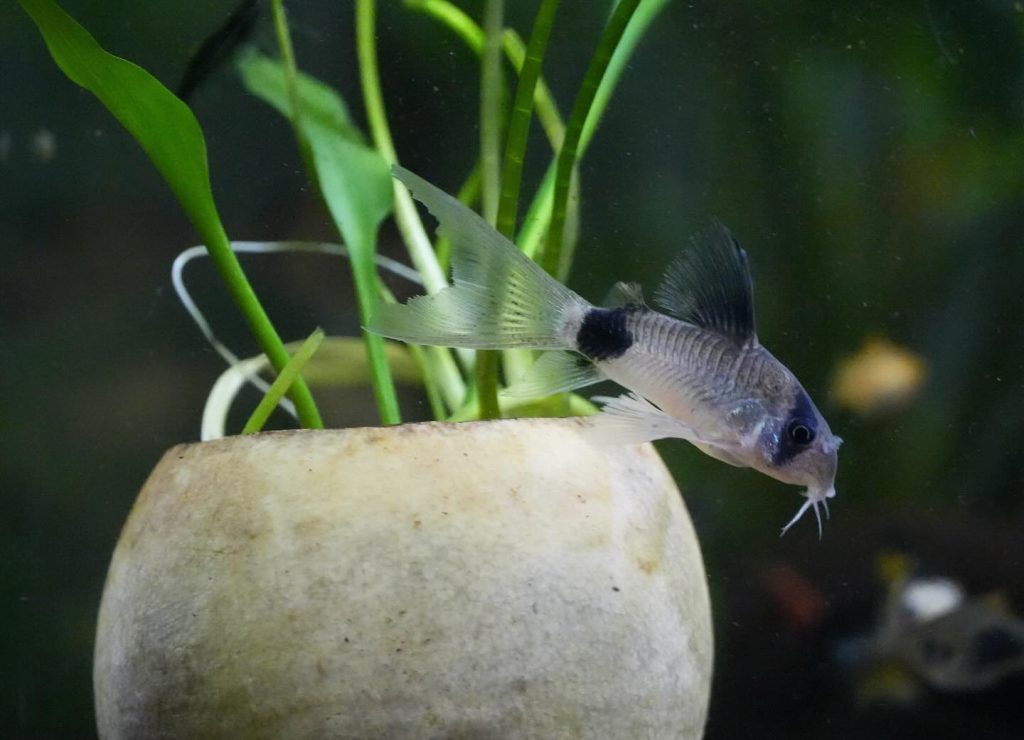
Although they are not the easiest species to breed, the intermediate level of difficulty involved in breeding Panda Corys can be mitigated with vigilant attention to maintaining pristine water conditions and effective filtration. The aquarium should also be well-appointed with ample hiding spots and tank decor to mimic their natural habitat and provide sanctuary for these shy breeders.
Suitable tank mates include other nano fish or adult shrimp, with which Panda Corys coexist peacefully without disturbing live plants. For breeding success, consider the following table of ideal water parameters:
| Water Parameter | Ideal Range |
|---|---|
| Temperature | Slightly cooler, but adaptable for captive-bred |
| Water Hardness | Soft |
| pH | Neutral to slightly acidic |
Providing a soft, fine substrate is essential, as Panda Corys are bottom dwellers with delicate barbels. They appreciate the comfort of a sandy bed and the privacy supplied by abundant tank decorations.

